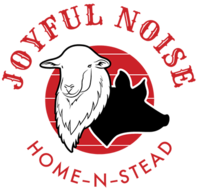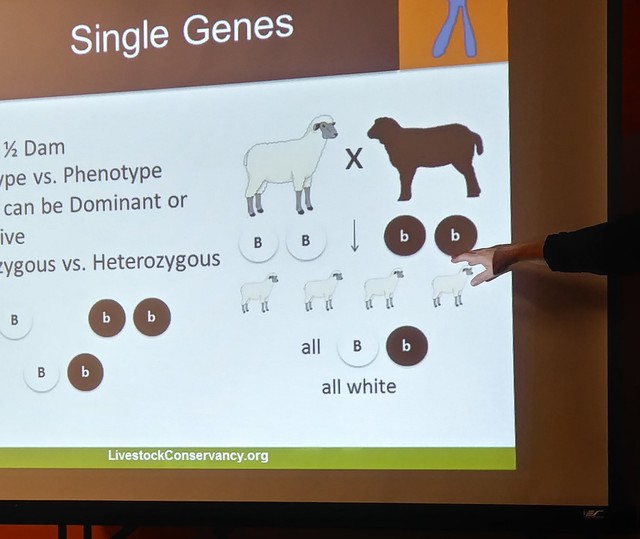Attending the LC Heritage Livestock Conference
Friday, November 30, 2018
In a culture that ‘connects’ via Facebook, Instagram, and Snapchat it was a delight to meet face to face with lovely souls from across not only the United States but the world at the 2018 Heritage Livestock Conference held in Fishers, Indiana this past November.
Over delicious meals featuring heritage meats and heirloom fruits and vegetables were discussions and discoveries about yaks, fiber, goats, sheep, hogs, cattle, horses, livestock guardian dogs, poultry and so much more. Hearing the stories of how individuals came to be at this gathering was both intriguing and encouraging: some, like me, attending for the first time, others that have long made The Livestock Conservancy conference an annual reunion. Rubbing elbows with long-time conservors of rare breeds as well as endearing talks with those still in the ‘planning stages’ of getting heritage livestock, filled me with excitement and new-found purpose in my own endeavors.
There were varied choices for pre-conference workshops to attend, even more conference day breakout sessions, and a post-conference session. I choose sessions that would apply to my small farm in Northern Indiana where I raise St Croix Hair Sheep and American Guinea Hogs. I have been involved as a member in breeders’ associations for almost two decades. By attending the workshop “The Tricky Business of Managing a Breed Association”, I took the opportunity to learn what is involved in the leadership of breed associations. The discussion, led by Brian Larson, TLC Board Chair, and Jeannette Beranger, a Senior Program Manager for The Conservancy, centered around breed standards/definitions, governance/bylaws/incorporation, registry, the form and function of an association, and membership services. It was quite eye-opening to hear these topics from the side of those managing the association and I find myself drawn to becoming more involved in the associations of the breeds I work with. One take-a-way is that the purpose of rare breeds is Function. When you change the form (breed and select for show), you also change the function. The value of rare breeds lies in their form and variety. Rare breeds are known for their excellent disposition and hardiness. We should all strive to maintain those qualities!
Many rare breeds of livestock are also known for excellent meat; well marbled, with an expansive flavor profile. The afternoon pre-conference session I planned to attend was “Charcuterie with Multiple Species” to be presented by butcher George Turkette of Turchettis Salumeria and Amy Lynn & Alan McKamey of Heritage Meadows Farm. In an unfortunate turn of events, George was injured and the venue had to be changed last minute. Instead, the attendees had a behind-the-scenes tour of The Smoking Goose Meatery, owned by Chris and Mollie Eley, followed by a fabulous feasting of charcuterie selections at Goose the Market near downtown Indianapolis. While we enjoyed the meats and treats, Amy and Alan encouraged great discussions and food for thought. When raising livestock we learn to adjust. Days do not always go as planned. The change of venue was handled well and though we did not get to learn the making of charcuterie, we certainly got a taste of what to strive for in our own endeavors. I hope this finds George up and about and I will look for another opportunity to visit his Salumeria.
The Breakout Sessions offered on the main day of the conference would make anyone wish to be cloned: Youth in Agriculture, DNA Analysis Primer, Marketing, Sheep, Horses, English Longhorns, Ducks, Advanced Technologies, Forage selection, Spinning, and Yards as mini-pastures. With all the tempting offerings in limited session times, difficult choices had to be made. I focused on DNA, Technologies, Forage and Mini-Pastures, again, because it fit my own needs and interests. Review of DNA and Punnett Squares and the discussion of simple genes vs multiple genes, genotype vs environment, inbreeding vs line-breeding were helpful in considerations of my own breeding programs. Charlene Couch, PhD, Programs Coordinator for the Conservancy, did an excellent job making sense of a potentially mind-boggling topic.
The Advanced Technologies panel discussion included Dr. Harvey Blackburn with the USDA NAGP, Dr. Kara Stewart of Purdue University, and Dr. Terry Stewart of Purdue University. We learned of the National Animal Germplasm Project, the cryopreservation of genetics of all livestock species and the failed attempt of AI in the Large Black hog and how that relates to heritage livestock preservation.
Laura Marie Kramer, La Bella Farm, discussed Forage Selection, the different grasses and legumes commonly used in pasture. We learned that grazers have larger, more complex rumens than concentrated selectors and the different forages should be chosen based on the animals grazing.
Yards as Mini-Pastures was a fun look at chickens and chicken tractors, moved daily across the yard with seeding and mulching after the tractor is moved also utilizing the chicken tractor over raised beds to cultivate, fertilize, and prepare the garden beds. This was presented by Pat Foreman from the Gossamer Foundation, and author of many books on chickens.
The post-conference workshop was perhaps my favorite. Held at Purdue University in West Lafayette, the class learned the reproduction of swine. We learned the functional anatomy and physiology of the boar and sow, boar training and semen collection (including a hands-on collection of boar semen), and the preparation of the semen for use. There were lab-specimens of the sow’s reproductive track and for those that wanted to, the chance to practice AI (Artificial Insemination) on live gilts. What is the importance of this? Heritage breeds of swine rarely have a sperm bank accessible for AI. It is difficult for small farms to maintain multiple boars (and in many cases, any boar at all). With the knowledge of collecting a boar and preserving the semen, and how to AI, breeders can easily share genetics not only across the county, but across the country. This will be a great help to the preservation of rare swine breeds, one of the goals of The Livestock Conservancy.
A weekend of learning how to better my efforts with heritage livestock preservation, delectable food, wonderful conversations, and connecting face-to-face with like-minded individuals - multiple reasons to attend the next Livestock Conservancy conference!
Becky Mahoney



